As part of the new visualization flagship – Collaborative Visual Exploration and Presentation, the visualization group in HPCViz is starting a new project to develop/extend interactive tools for presentation of simulation data (e.g. using Kinect), working closely with the end-users.
We are organizing a demonstration (with lunch included!) for SeRC researchers, to show prototypes and discuss possibilities for collaboration with the user communities, i.e. molecular simulations, CFD, electronic structure etc.
We invite representatives from each group to tell us about their needs and suggest to the visualization experts what interfaces they would like to see developed.
More details follow, and please rsvp (to Rossen Apostolov, rossen@kth.se) by Dec. 7th who will attend. (It will be fun!)
What: Lunch meeting to discuss New SeRC flagship-Collaborative Visual Exploration and Presentation – KTH Chapter
When: Tuesday, December 10, 12:30 – 14:30
Where: VIC Visualization Studio (Directions)
Who: SeRC researchers hosted by Rossen Apostolov, Björn Thuresson, Erwin Laure, and Mario Romero
Please RSVP by December 7 to reserve your lunch, including dietary restrictions.
Title:
Supporting collaborative view transformations of simulation-based data
Aims:
1. Create an experimental interactive infrastructure that supports direct simultaneous multi-user view transformations of pre-simulated visual structures in support of collaborative visual exploration in large visualization environments.
2. Evaluate the interactive infrastructures proposed in Aim 1 with domain experts and relevant data and tasks.
3. Produce a permanent support infrastructure that is integrated into real work practices of domain experts and which gives rise to long-lasting positive efficiency effects.
Description:
Scientific simulations typically require extensive processing time. Scientists carefully define the parameters of the simulation, run it, and wait for the results. The wait ranges from minutes to days. Researchers then analyze the results of the simulation through visualization tools that afford real-time interaction. The interaction methods include rotations, translations, camera placement and parametrization, illumination, cuts, filters, coloring, and translucency among others. Scientists analyze the data by mapping it to visual structures and performing view transformations on these structures to produce insightful views which eventually become publication and presentation figures. Scientist aim to understand the data, first, and communicate the results, second. The typical work process in this scenario combines the efforts of a lead scientist and a team of research assistants and colleagues. The research assistants execute the simulation and produce draft visualizations to communicate the results of the experiment with the lead scientist who then comments on the results. The feedback usually focuses on the simulation itself, in the initial steps, or on the effectiveness of the rendered views, towards the final steps. Once these views provide insight to the lead scientist and the research assistant, the typical next step is to discuss them during research group meetings, where other co-investigators provide their feedback on the simulation, the visualization, or both. At this point, the research assistant repeats the cycle. This iterative process typically takes weeks to complete. The goal of the current proposal is to reduce the time-to-task completion of the visualization aspects of this process from weeks to hours by providing simultaneous direct manipulation access to the group of researchers working in a large visualization environment and producing the views that communicate the results of the simulation. We will use, augment, and study the infrastructure of the Visualization Studio at KTH. We will recruit SeRC collaborators as participants of the study. We will observe their current visualization practices and design interventions to increase task efficiency and effectiveness. We will evaluate the objective and subjective impact of our interventions and design permanent support structures for the most common collaborative visualization tasks among research scientists.




